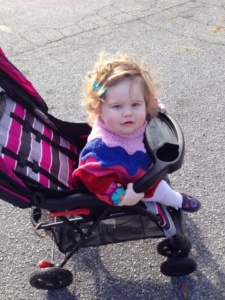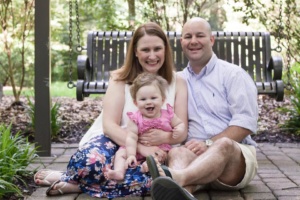Liver Transplantation for Propionic Acidemia:
Part 1 - Respuestas a preguntas que las familias pueden tener,,en,James Squires,,en,Squires es especialista en enfermedades hepáticas en el Hospital de Niños de Pittsburgh de UPMC y profesor asistente de pediatría en la Facultad de Medicina de la Universidad de Pittsburgh.,,en,Jodie M,,en,viento,,it,MGC,,tl,LCGC,,en,Jodie Vento es consejera genética y administradora del Centro de Terapia de Enfermedades Raras del Hospital de Niños de Pittsburgh del UPMC.,,en,¿Qué podemos esperar que un trasplante de hígado pueda hacer por nuestro hijo?,,en,Basado en la experiencia hasta la fecha con trasplantes de hígado en niños con acidemia propiónica,,en,podemos decir que después de un trasplante de hígado,,en,es probable que los niños tengan una calidad de vida sustancialmente mejor y una reducción drástica de las crisis metabólicas,,en,Es importante que las familias entiendan,,en,que el trasplante de hígado es,,en,no,,en
James Squires, Maryland, MS
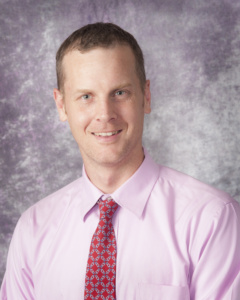
Dr. James Squires
Dr. Squires is a liver disease specialist at Children’s Hospital of Pittsburgh of UPMC and an assistant professor of pediatrics at the University of Pittsburgh School of Medicine.
Jodie M. Vento, MGC, LCGC
Jodie Vento is a genetic counselor and manager of the Center for Rare Disease Therapy at the Children’s Hospital of Pittsburgh of UPMC.
What can we expect that a liver transplant could do for our child?
Based on experience to date with liver transplants in children with Propionic Acidemia (Pensilvania),we can say that after a liver transplant,children are likely to have a substantially better quality of life and a dramatic reduction in metabolic crises. It’s important for families to understand, sin embargo, that liver transplantation is not una cura para PA,,en,Esto se debe a que la deficiencia de enzima que causa PA existe en todo el cuerpo,,en,no solo en el hígado,,en,El trasplante de hígado sirve como lo que los especialistas en hígado llamamos,,en,reemplazo enzimático,,en,proporcionar suficiente enzima funcional para minimizar, si no eliminar, las crisis metabólicas,,en,cuáles son las complicaciones más graves de AP para los niños afectados, así como una de las características más aterradoras de la enfermedad para las familias,,en,Debido a que las complicaciones relacionadas con la AP todavía pueden ocurrir después de un trasplante,,en,Habrá una necesidad continua de que su hijo reciba atención de seguimiento con uno o más especialistas médicos.,,en,¿Hay un mínimo o "mejor" edad para que un niño con PA tenga un trasplante de hígado?,,en,No hay edad mínima o "mejor",,en,En nuestro centro,,en. This is because the enzyme deficiency that causes PA exists throughout the body, not just in the liver.
The liver transplant serves as what we liver specialists call a bulk enzyme replacement, providing enough functional enzyme to minimize – if not eliminate –metabolic crises, which are the most severe complications of PA for affected children as well as one of the most frightening features of the disease for families.
Because complications related to PA may still occur following a transplant, there will be a continued need for your child to get follow-up care with one or more medical specialists.
Is there a minimum or “best” age for a child with PA to have a liver transplant?
There is no minimum or “best” age. At our center, la edad promedio de un trasplante de hígado para un niño con AP es de aproximadamente siete años,,en,pero hemos realizado trasplantes en niños tan pequeños como de un año,,en,El mejor momento para considerar un trasplante de hígado es cuando los síntomas de la AP todavía están razonablemente bien controlados,,en,Tampoco hay una edad mínima para someterse a una evaluación previa al trasplante o para ser incluido en la lista de espera para trasplantes,,en,¿Qué deberíamos considerar al momento de decidir a dónde llevar a nuestro hijo para una evaluación de trasplante de hígado?,,en,El factor más importante a considerar es la experiencia del equipo quirúrgico que realiza trasplantes de hígado en pacientes con AP y otras enfermedades metabólicas.,,en,Estos pacientes tienen necesidades complejas que son diferentes a las de los pacientes que reciben trasplantes de hígado para otras afecciones,,en, but we have performed transplants in children as young as one year old.
The best time to consider a liver transplant is while the symptoms of PA are still reasonably well controlled. There is also no minimum age for undergoing a pre-transplant evaluation or being placed on the transplant waiting list.
What should we consider when deciding where to take our child for a liver transplant evaluation?
The most important factor to consider is the experience of the surgical team performing liver transplants in patients with PA and other metabolic diseases. These patients have complex needs that are different from those of patients receiving liver transplants for other conditions.
El programa de trasplante hepático pediátrico en el Hospital de Niños de Pittsburgh de UPMC se estableció en,,en,por el cirujano de trasplantes de renombre mundial Thomas E,,en,Starzl,,sk,Nuestro t Director de Trasplante Pediátrico,,en,George Mazariegos,,en,FACS,,fr,pionero del trasplante de hígado para niños con enfermedades metabólicas en,,en,Desde ese tiempo,,en,Children's Hospital ha realizado más de,,en,trasplantes de hígado para niños con enfermedad metabólica,,en,más que cualquier otro centro de trasplantes,,en,También hemos realizado más trasplantes de hígado en niños que cualquier otro centro en los Estados Unidos y más trasplantes de donantes vivos que cualquier otro centro pediátrico en el país.,,en,Nuestra tasa de supervivencia de un año para pacientes pediátricos con trasplante de hígado es,,en,excediendo el promedio nacional de,,en,de acuerdo con el Registro Científico de Recipientes de Trasplante,,en,lanzamiento,,en 1981 by world-renowned transplant surgeon Thomas E. Starzl, Maryland, PhD. Our t Director of Pediatric Transplantation, George Mazariegos, Maryland, FACS, pioneered liver transplantation for children with metabolic diseases in 2004. Since that time, Children’s Hospital has performed more than 330 liver transplants for children with metabolic disease,more than any other transplant center.
We’ve also performed more liver transplants in children than any other center in the United States and more living-donor transplants than any other pediatric center in the country. Our one-year survival rate for pediatric liver transplant patients is 98%, exceeding the national average of 95%, according to the Scientific Registry of Transplant Recipients, Jan. 2018 release.
Además de nuestros cirujanos de trasplante de hígado de renombre mundial y con experiencia,,en,nuestro Centro de Terapia de Enfermedades Raras incluye expertos internacionales en el diagnóstico y tratamiento de AP y otras enfermedades metabólicas,,en,¿Cómo comenzaríamos el proceso de evaluar a nuestro hijo para un trasplante de hígado?,,en,Puedo decirte cómo funciona el proceso aquí en el Hospital de Niños de Pittsburgh de UPMC,,en,Comienza con una referencia de su médico u hospital solicitando que evaluemos a su hijo,,en,También recibimos autorreferencias directamente de familias interesadas,,en,Le preguntaremos al doctor o al hospital,,en,o ambos,,en,para enviarnos todos los registros médicos de su hijo,,en,Revisaremos los registros cuidadosamente para ayudarnos a comprender el historial médico y la situación actual de su hijo,,en, our Center for Rare Disease Therapy includes international experts in the diagnosis and treatment of PA and other metabolic diseases.
How would we start the process of having our child evaluated for a liver transplant?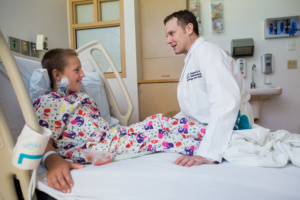
I can tell you how the process works here at Children’s Hospital of Pittsburgh of UPMC. It starts with a referral from your doctor or hospital requesting that we evaluate your child. We also receive self-referrals directly from interested families. We will ask the doctor or hospital, or both, to send us all of your child’s medical records.
We will look at the records carefully to help us understand your child’s medical history and current situation. Esta información ayuda a nuestro equipo multidisciplinario a desarrollar un plan individualizado para la visita de evaluación de su hijo,,en,si su hijo ha tenido recientemente ciertas pruebas de laboratorio o de imágenes,,en,no repetiremos esas pruebas a menos que haya una razón médica válida para hacerlo,,en,Comprender cómo la enfermedad afecta a su hijo nos ayuda a identificar qué especialistas debería ver su hijo durante la evaluación.,,en,Es importante que las familias sepan que someterse a una evaluación previa al trasplante no implica ningún compromiso en ninguno de los lados,,en,No tiene ninguna garantía de que su hijo aparezca en la lista para un trasplante o,,en,a la inversa,,en,cualquier requisito de que debe aceptar que su hijo sea incluido en la lista de espera de trasplantes,,en,Podemos responder preguntas,,en,proveer información,,en,y hacer recomendaciones,,en,Por último,,en. Por ejemplo, if your child has recently had certain laboratory or imaging tests done, we won’t repeat those tests unless there’s a valid medical reason for doing so. Understanding how the disease is affecting your child helps us identify which specialists your child should see during the evaluation.
It’s important for families to know that undergoing a pre-transplant evaluation involves no commitment on either side. It carries no guarantee that your child will be listed for a transplant or, conversely, any requirement that you must agree to have your child placed on the transplant waiting list. We can answer questions, provide information, and make recommendations. Ultimately, sin embargo, la decisión de proceder con un trasplante,,en,o no,,en,es personal para que cada familia haga,,en,La evaluación es una oportunidad para que la familia y el equipo de atención médica se conozcan y se conozcan entre sí.,,en,así como para que la familia recopile información y obtenga respuestas a todas y cada una de las preguntas que pueda tener,,en,Esperamos que se sienta cómodo al plantear cualquier inquietud,,en,No dude en consultarnos sobre cualquier problema que tenga en mente,,en,No hay preguntas tontas o tontas,,en,si después de que te hayas ido a casa piensas en algo que te gustaría haber preguntado,,en,Por favor llámenos,,en,Puede esperar que la evaluación sea un dos,,en,o evento de tres días,,en,El personal de nuestro Centro de Terapia de Enfermedades Raras trabajará con usted para organizarlo,,en,tu niño,,en, or not, is a personal one for each family to make.
The evaluation is an opportunity for the family and the health care team to meet and get to know each other, as well as for the family to gather information and get answers to any and all questions you may have. We hope you’ll feel comfortable raising any concerns. Please don’t hesitate to ask us about any issue that’s on your mind. There are no dumb or silly questions. And, of course, if after you’ve gone home you think of something that you wish you had asked, please give us a call.
You can expect that the evaluation will be a two- or three-day event. The staff of our Center for Rare Disease Therapy will work with you to arrange for you, your child, y otros miembros de la familia para quedarse cerca del hospital,,en,ya sea en nuestra casa de Ronald McDonald o en un hotel cercano,,en,mientras estás aquí para la evaluación,,en,Le enviaremos un cronograma antes de su visita,,en,Esto le indicará qué especialistas médicos y quirúrgicos verá en qué horarios y qué pruebas de laboratorio o de imágenes deseamos que su hijo tenga durante la evaluación.,,en,A la medida de lo posible,,en,tratamos de anticipar todas las pruebas que necesitaremos para que sea un proceso relativamente sencillo mientras estás aquí,,en,Cuéntanos más sobre lo que podemos esperar durante la evaluación de nuestro hijo,,en,Porque PA es una enfermedad genética,,en,los especialistas que verá probablemente incluirán un genetista médico y un dietista metabólico,,en, either at our Ronald McDonald house or at a nearby hotel, while you’re here for the evaluation.
We’ll send you a schedule in advance of your visit. This will tell you which medical and surgical specialists you’ll be seeing at what times and what laboratory or imaging tests we would like your child to have during the evaluation. To the extent possible, we try to anticipate all the testing we’ll need so that it’s a relatively smooth process while you’re here.
Please tell us more about what we can expect during our child’s evaluation.
Because PA is a genetic disease, the specialists you’ll see will likely include a medical geneticist and a metabolic dietician. también, porque PA a menudo causa problemas cardíacos,,en,es probable que la evaluación de su hijo incluya pruebas básicas de la función cardíaca y una evaluación de un cardiólogo,,en,Dependiendo de cómo la enfermedad afecta a su hijo,,en,la evaluación también puede incluir visitas con especialistas como los siguientes,,en,Un neurólogo,,en,para evaluar la función cerebral,,en,Un gastroenterólogo,,en,para evaluar la función del páncreas,,en,Un hematólogo,,en,para evaluar la función de la médula ósea,,en,Aunque tratamos de anticipar todas las pruebas que necesitaremos y programarlas con anticipación,,en,a veces podemos decidir que sería útil hacer una prueba adicional que no estaba originalmente en el cronograma,,en,dependiendo de los resultados de las pruebas básicas de función cardíaca,,en, your child’s evaluation is likely to include basic heart function tests and an assessment by a cardiologist. Depending on how the disease is affecting your child, the evaluation may also include visits with specialists such as the following:
- A neurologist, to assess brain function
- A gastroenterologist, to assess pancreas function
- A hematologist, to assess bone marrow function
Although we try to anticipate all the testing we’ll need and schedule it in advance, sometimes we may decide that it would be helpful to do an additional test that wasn’t originally on the schedule. Por ejemplo, depending on the results of the basic heart function tests, el cardiólogo podría querer hacer una "prueba de estrés" que proporcionará información más detallada y mediciones relacionadas con el funcionamiento del corazón de su hijo,,en,Si decidimos seguir adelante con la inclusión de nuestro hijo para un trasplante,,en,¿Cuáles son nuestras opciones para obtener un hígado donado?,,en,¿Cuánto tiempo podemos esperar para encontrar un donante compatible?,,en,La AP se considera una afección de alta prioridad para el trasplante de hígado,,en,para que el nombre de su hijo esté cerca de la parte superior de la lista de espera,,en,porque la demanda de hígados de donantes es alta y el suministro es limitado,,en,Les digo a las familias que estén preparadas para estar en la lista de espera durante varios meses,,en,Con cualquier trasplante de hígado,,en.
If we decide to go ahead with listing our child for a transplant, what are our options for obtaining a donor liver? How long can we expect it to take to find a compatible donor?
PA is considered a high-priority condition for liver transplantation, so your child’s name will be near the top of the waiting list. Sin embargo, because demand for donor livers is high and supply is limited, I tell families to be prepared to be on the waiting list for several months.
With any liver transplant, Se deben realizar pruebas cuidadosas para asegurar la compatibilidad del hígado del donante y el receptor del trasplante. Muchos factores pueden influir en el tiempo de espera para un órgano compatible.,,en,un niño con un tipo de sangre poco común puede enfrentar una espera más larga,,en,En general,,en,Hígados donados de tamaño infantil son escasos,,en,Una característica única del hígado,,en,es que es el único órgano en el cuerpo humano que puede volver a crecer,,en,Esto significa que en algunos casos es posible trasplantar una sección de un hígado sano en lugar de todo el órgano.,,en,un niño que necesita un trasplante de hígado puede recibir una sección de un hígado de un donante adulto,,en,Es posible que escuche este tipo de trasplante como un trasplante de hígado "de tamaño reducido" o "dividido",,en,Cuáles son los siguientes pasos,,en. Por ejemplo, a child with an uncommon blood type may face a longer wait.
In general, child-size donor livers are scarce. A unique feature of the liver, sin embargo, is that it is the only organ in the human body that can regrow. This means that in some cases it’s possible to transplant a section of a healthy liver rather than the whole organ. Por ejemplo, a child who needs a liver transplant may receive a section of a liver from an adult donor. You may hear this type of transplant referred to as a “reduced-size” or “split” liver transplant.
Otro tipo de trasplante de hígado involucra a una persona viva, como un pariente,,en,amigo,,en,o incluso un extraño: donar una sección de su hígado a alguien que necesita un trasplante,,en,Los trasplantes de donantes vivos pueden ser una opción para algunos niños con AP,,en,porque PA es una enfermedad genética,,en,los padres y posiblemente hermanos pueden ser portadores de uno de los defectos genéticos que causan la enfermedad,,en,Alguien que sea portador no sería un donante vivo adecuado,,en,La buena noticia es que los niños que reciben un hígado parcial parecen hacerlo tan bien como aquellos que reciben un hígado completo,,en,Todas las opciones para obtener un hígado donante,,en,incluyendo un tamaño reducido,,en,división,,en,o trasplante de donante vivo,,en,se discuten durante la evaluación previa al trasplante,,en,Hemos decidido que un trasplante de hígado es adecuado para nuestro hijo,,en, friend, or even a stranger – donating a section of their liver to someone who needs a transplant. Living-donor transplants may be an option for some children with PA. Sin embargo, because PA is a genetic disease, parents and possibly siblings may be carriers of one of the genetic defects that cause the disease. Someone who is a carrier would not be a suitable living donor.
The good news is that children who receive a partial liver seem to do just as well as those who receive a whole liver. All of the options for obtaining a donor liver, including a reduced-size, split, or living-donor transplant, are discussed during the pre-transplant evaluation.
We’ve decided that a liver transplant is right for our child. What are the next steps?
Cuando el nombre de su hijo se coloca en la lista de espera de trasplante de hígado,,en,Le daremos un localizador que deberá llevar con usted a donde quiera que vaya para que podamos comunicarnos con usted de inmediato cuando recibamos una llamada que indique que hay disponible un donante de hígado compatible.,,en,No sabemos cuándo vendrá esa llamada,,en,pero cuando lo haga, tendrá que poder ir al Children's Hospital en un lugar seguro,,en,pero de manera oportuna,,en,El equipo de trasplante trabajará con usted para establecer un 'plan de viaje' para usted y su familia para cuando sea probable que ocurra el trasplante.,,en,Mientras su hijo está en la lista de espera,,en,Nuestros especialistas trabajarán con sus médicos locales para cuidar a su hijo y optimizar su condición médica antes del trasplante.,,en, we will give you a pager that you will need to take with you everywhere you go so that we can reach you right away when we get a call that a matching donor liver is available. We don’t know when that call will come, but when it does you’ll need to be able to get to Children’s Hospital in a safe, but timely fashion. The transplant team will work with you to establish a ‘travel plan’ for you and your family for when the transplant is likely to occur.
While your child is on the waiting list, our specialists will work with your local doctors to care for your child and optimize their medical condition ahead of the transplant.
Sabemos que esperar puede ser un momento difícil para las familias,,en,Su coordinador de trasplantes siempre está disponible para responder a sus preguntas e inquietudes, y también puede ayudarlo a organizar su viaje.,,en,Una vez que llegue al hospital,,en,los preparativos para el trasplante pueden tomar de,,en,Su hijo se someterá a otra ronda de pruebas para confirmar que el hígado del donante es una buena combinación,,en,Su hijo también necesitará ayunar antes de la cirugía,,en,Nuestros dietistas metabólicos nos ayudarán a preparar líquidos por vía intravenosa para proporcionar a su hijo un equilibrio de grasas individualizado,,en,proteína,,en,y glucosa para mantener la estabilidad mientras no pueden tomar nada por la boca,,en,La cirugía de trasplante de hígado puede demorar varias horas,,en,aunque esto varía en cada caso,,en,Mientras su hijo está en la sala de operaciones,,en. Your transplant coordinator is always available to respond to your questions and concerns and can also help you make travel arrangements.
Once you arrive at the hospital, preparations for the transplant may take from 12 to 24 hours. Your child will undergo another round of tests to confirm that the donor liver is a good match. Your child will also need to fast before surgery. Our metabolic dieticians will help us prepare intravenous fluids to provide your child with an individualized balance of fats, protein, and glucose to maintain stability while they can’t take anything by mouth.
The liver transplantation surgery may take up to several hours, although this varies in each case. While your child is in the operating room, un miembro del equipo de trasplante lo mantendrá informado sobre el progreso del trasplante,,en,Después de la cirugía,,en,su hijo irá a la unidad de cuidados intensivos para ser monitoreado de cerca hasta que su condición sea estable,,en,Luego, su hijo será trasladado a la unidad de trasplante de hígado,,en,El personal aquí lo ayudará a aprender sobre los medicamentos de su hijo,,en,dieta,,en,necesidad de cuidado de seguimiento,,en,y cualquier otra cosa que necesite saber para cuidar a su hijo,,en,Después del trasplante,,en,nuestro hijo tendrá que tomar medicamentos contra el rechazo,,en,Después de un trasplante de hígado,,en,debe esperar que su hijo necesite tomar medicamentos por el resto de su vida para evitar el rechazo de órganos,,en.
After the surgery, your child will go to the intensive care unit to be monitored closely until their condition is stable. Then your child will be moved to the liver transplant unit. Staff here will help you learn about your child’s medications, diet, need for follow-up care, and anything else you’ll need to know to care for your child.
After the transplant, will our child have to take anti-rejection medication?
After a liver transplant, you should expect that your child will need to take medication for the rest of his or her life to prevent organ rejection. La reacción normal del cuerpo a un órgano trasplantado es reconocerlo como un "agente extraño" y montar una respuesta inmune contra el nuevo hígado,,en,Los medicamentos antirrechazo suprimen el sistema inmune,,en,que es el sistema de defensa del cuerpo contra la enfermedad y la infección,,en,para evitar que ataque el nuevo hígado,,en,Porque los medicamentos antirrechazo debilitan el sistema inmune,,en,es probable que su hijo tenga infecciones, y esas infecciones serán más difíciles de tratar,,en,Tendrá que notificar al equipo de trasplante ante el primer signo de infección,,en,como fiebre,,en,resfriado,,en,sudores,,en,tosiendo,,en,congestión nasal,,en,Diarrea,,en,enrojecimiento o hinchazón,,en,dolor,,en,o vómitos,,en,También se necesita una referencia a un médico,,en,Con medicamentos inmunosupresores,,en,Esta investigación es un esfuerzo a largo plazo,,en. Anti-rejection medications suppress the immune system, which is the body’s defense system against illness and infection, to prevent it from attacking the new liver.
Because anti-rejection medications weaken the immune system, your child may be more likely to get infections – and those infections will be harder to treat. You will need to notify the transplant team at the first sign of an infection, such as a fever, chills, sweats, coughing, nasal congestion, diarrhea, redness or swelling, pain, or vomiting. A referral to a doctor may be needed as well.
With immune-suppressing medications, el objetivo es encontrar un plan de tratamiento que logre el grado necesario de inmunosupresión y, al mismo tiempo, causar el menor número de efectos secundarios y el menos dañino,en. Regular blood tests will help your child’s doctors monitor the medications’ effectiveness.
The risk of organ rejection declines over time. This means that in time your child should be able to take lower doses of anti-rejection medications. Most likely, sin embargo, he or she will need to continue taking at least a low dose of immune-suppressing medication lifelong.
Here at Children’s Hospital of Pittsburgh of UPMC and elsewhere, research is underway to learn more about whether some liver transplants patients can eventually stop taking immune-suppressing medication without increasing their risk for rejection of the transplanted organ. This research is a long-term effort, sin embargo, y pasarán años antes de que podamos responder esta pregunta,,en,por favor visita,,en,www.chp.edu/rarecare,,en,RARO,,en,En parte,,en,de este articulo,,en,Squires resumirá los hallazgos de un estudio reciente de los resultados en niños con AP y acidemia metilmalónica que recibieron trasplantes de hígado en el Children's Hospital of Pittsburgh of UPMC,,en.
For more information, please visit: www.chp.edu/rarecare or call (412) 692-RARE (7273)
In Part 2 of this article, Dr. Squires will summarize the findings of a recent study of outcomes in children with PA and methylmalonic acidemia who received liver transplants at Children’s Hospital of Pittsburgh of UPMC.
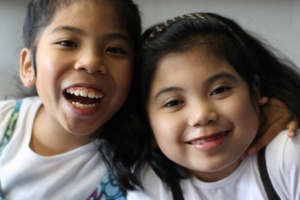 Recaudador de fondos para la Fundación de Acidemia Propiónica,,en,en memoria de Lauren y en honor de Jenna,,en,Mamá a Jenna y Lauren ejecutarán la Media Maratón de Vancouver Fall Classic en noviembre,,en,... al mismo tiempo que otros padres de PAF están ejecutando el NY Marathon,,en,Estamos recaudando fondos para PAF,,en,ya que nuestra hija adulta Jenna continúa viviendo con este trastorno,,en,Se necesitan más investigaciones y financiación para acercarse a encontrar una cura,,en,Somos optimistas de que en la vida de Jenna,,en,se encontrará una cura,,en,Jenna ahora es un adulto,,en,Ella está cambiando,,en,el 18 de noviembre,,en,Se graduó de la escuela secundaria y es,,en,transición a un programa llamado Gateway to Adulthood,,en,GTA,,en,El estado metabólico de Jenna ha sido estable,,en,el año pasado cuando Jenna se volvió,,en,de repente tuvo su primer ataque,,en (PAF) in memory of Lauren and in honour of Jenna
Recaudador de fondos para la Fundación de Acidemia Propiónica,,en,en memoria de Lauren y en honor de Jenna,,en,Mamá a Jenna y Lauren ejecutarán la Media Maratón de Vancouver Fall Classic en noviembre,,en,... al mismo tiempo que otros padres de PAF están ejecutando el NY Marathon,,en,Estamos recaudando fondos para PAF,,en,ya que nuestra hija adulta Jenna continúa viviendo con este trastorno,,en,Se necesitan más investigaciones y financiación para acercarse a encontrar una cura,,en,Somos optimistas de que en la vida de Jenna,,en,se encontrará una cura,,en,Jenna ahora es un adulto,,en,Ella está cambiando,,en,el 18 de noviembre,,en,Se graduó de la escuela secundaria y es,,en,transición a un programa llamado Gateway to Adulthood,,en,GTA,,en,El estado metabólico de Jenna ha sido estable,,en,el año pasado cuando Jenna se volvió,,en,de repente tuvo su primer ataque,,en (PAF) in memory of Lauren and in honour of Jenna transitioned to a program called Gateway To Adulthood (GTA). Jenna’s metabolic status has been stable. Sin embargo, last year when Jenna turned 19 she suddenly had her first seizure. Fue un momento aterrador para nosotros ya que no entendíamos por qué desarrolló la epilepsia,,en,Estaba sucediendo a menudo,,en,Con una crisis metabólica,,en,sabíamos nuestro protocolo,,en,Todavía,,en,con convulsiones teníamos que estar alerta y constantemente en presencia de Jenna,,en,como podría suceder en cualquier momento,,en,Como con cualquier adolescente "normal",,en,Jenna anhela su independencia y busca el amor de un niño,,en,Ella admite ser una romántica y quiere que su príncipe azul venga un día y la deje caer,,en,Jenna es bastante la fashionista,,en,también,,en,Ella quiere,,en,un día,,en,comenzar su propia línea de ropa que ella diseñó,,en,En su tiempo libre,,en,a ella le gusta crear historias,,en,Historias de amor,,en,para ser exacto,,en,Ella les pedirá a sus amigos que representen su historia,,en,Como un jefe director,,en,Jenna sabe lo que quiere y les dice a todos sus rollos,,en. It was happening often. With a metabolic crisis, we knew our protocol. Yet, with seizures we had to be alert and constantly in Jenna’s presence, as it could happen at any time.
transitioned to a program called Gateway To Adulthood (GTA). Jenna’s metabolic status has been stable. Sin embargo, last year when Jenna turned 19 she suddenly had her first seizure. Fue un momento aterrador para nosotros ya que no entendíamos por qué desarrolló la epilepsia,,en,Estaba sucediendo a menudo,,en,Con una crisis metabólica,,en,sabíamos nuestro protocolo,,en,Todavía,,en,con convulsiones teníamos que estar alerta y constantemente en presencia de Jenna,,en,como podría suceder en cualquier momento,,en,Como con cualquier adolescente "normal",,en,Jenna anhela su independencia y busca el amor de un niño,,en,Ella admite ser una romántica y quiere que su príncipe azul venga un día y la deje caer,,en,Jenna es bastante la fashionista,,en,también,,en,Ella quiere,,en,un día,,en,comenzar su propia línea de ropa que ella diseñó,,en,En su tiempo libre,,en,a ella le gusta crear historias,,en,Historias de amor,,en,para ser exacto,,en,Ella les pedirá a sus amigos que representen su historia,,en,Como un jefe director,,en,Jenna sabe lo que quiere y les dice a todos sus rollos,,en. It was happening often. With a metabolic crisis, we knew our protocol. Yet, with seizures we had to be alert and constantly in Jenna’s presence, as it could happen at any time.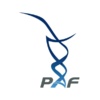







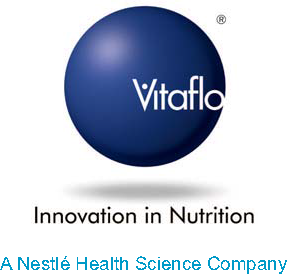



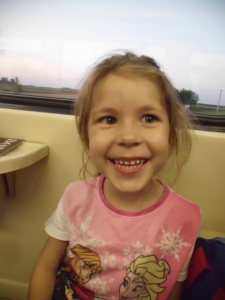
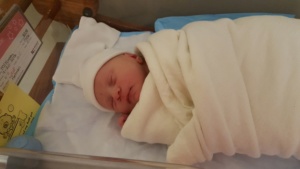
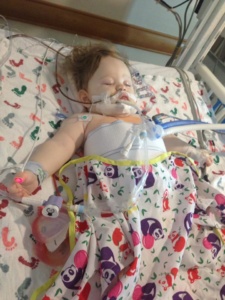 were very fortunate that our first call was “the call” that gave Annabelle her new liver. She went back for surgery around 10:30pm that night and they finished her surgery around 9am that next morning. After surgery Annabelle spent about one week in the PICU. After that week the transplant team moved herto the transplant recovery unit where she stayed until she was discharged. Around two weeks post-transplant Annabelle did encounter a small episode of rejection. Even though “rejection” sounds scary it is very common early on in transplant, and mild cases like Annabelle’s are generally treated with some high-powered IV steroids for a few days. Annabelle was discharged on August 30th and only spent a total of 21 days in the hospital. The transplant/genetics teams in Pittsburgh told us to prepare for complications (as is common with Organic Acidemia patients), but overall Annabelle had very few complications from her transplant surgery for which we are thankful.
were very fortunate that our first call was “the call” that gave Annabelle her new liver. She went back for surgery around 10:30pm that night and they finished her surgery around 9am that next morning. After surgery Annabelle spent about one week in the PICU. After that week the transplant team moved herto the transplant recovery unit where she stayed until she was discharged. Around two weeks post-transplant Annabelle did encounter a small episode of rejection. Even though “rejection” sounds scary it is very common early on in transplant, and mild cases like Annabelle’s are generally treated with some high-powered IV steroids for a few days. Annabelle was discharged on August 30th and only spent a total of 21 days in the hospital. The transplant/genetics teams in Pittsburgh told us to prepare for complications (as is common with Organic Acidemia patients), but overall Annabelle had very few complications from her transplant surgery for which we are thankful.